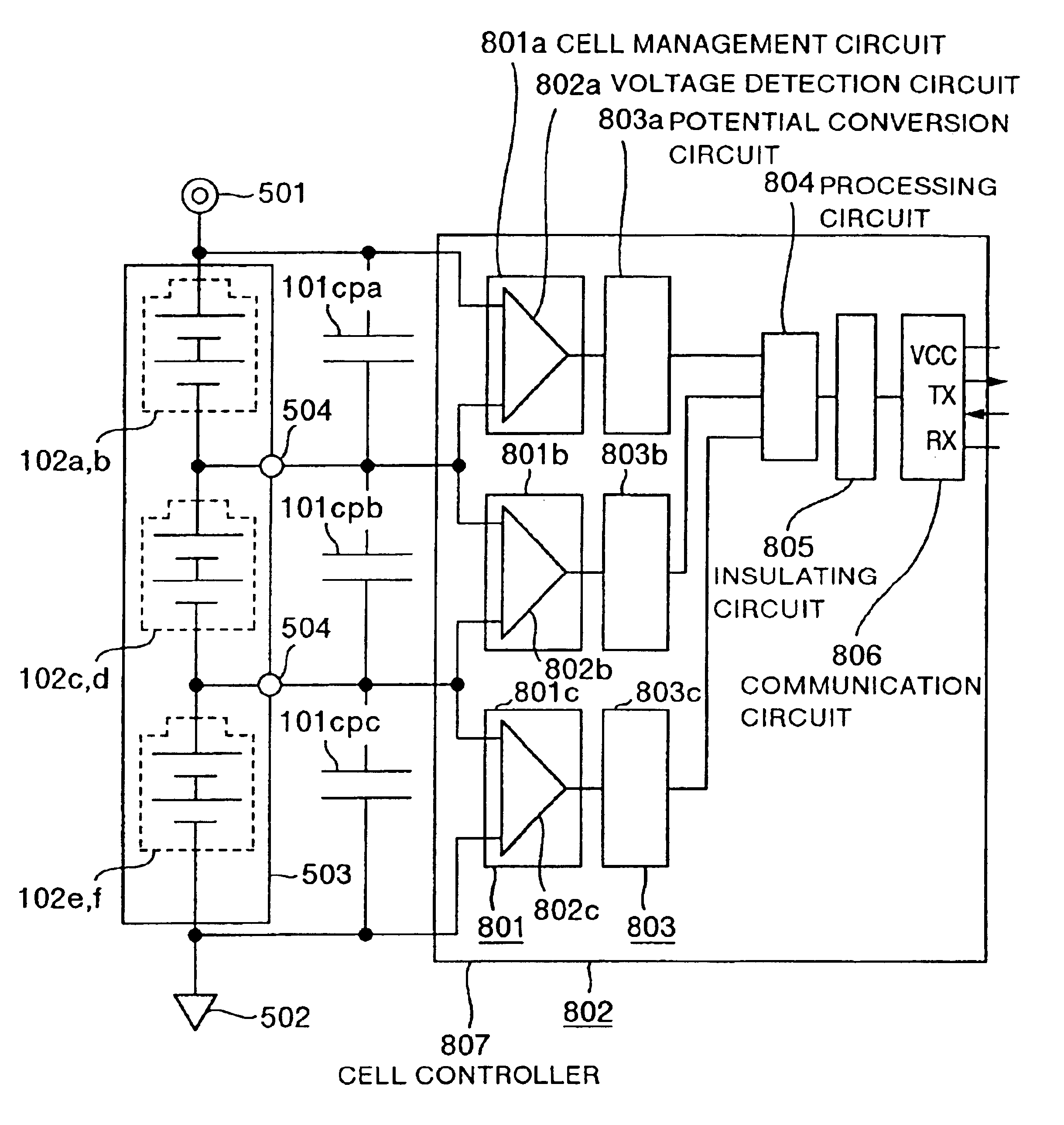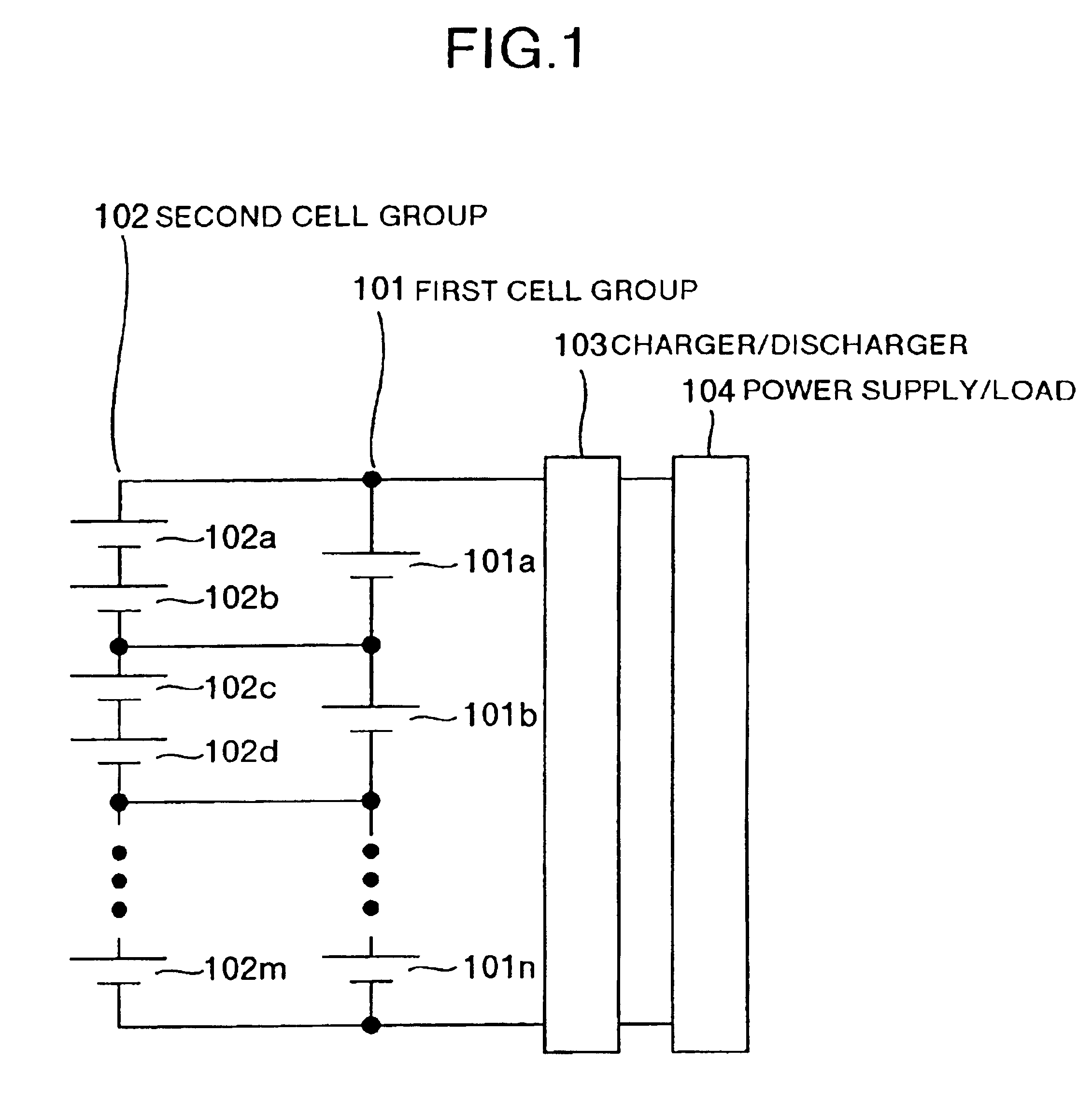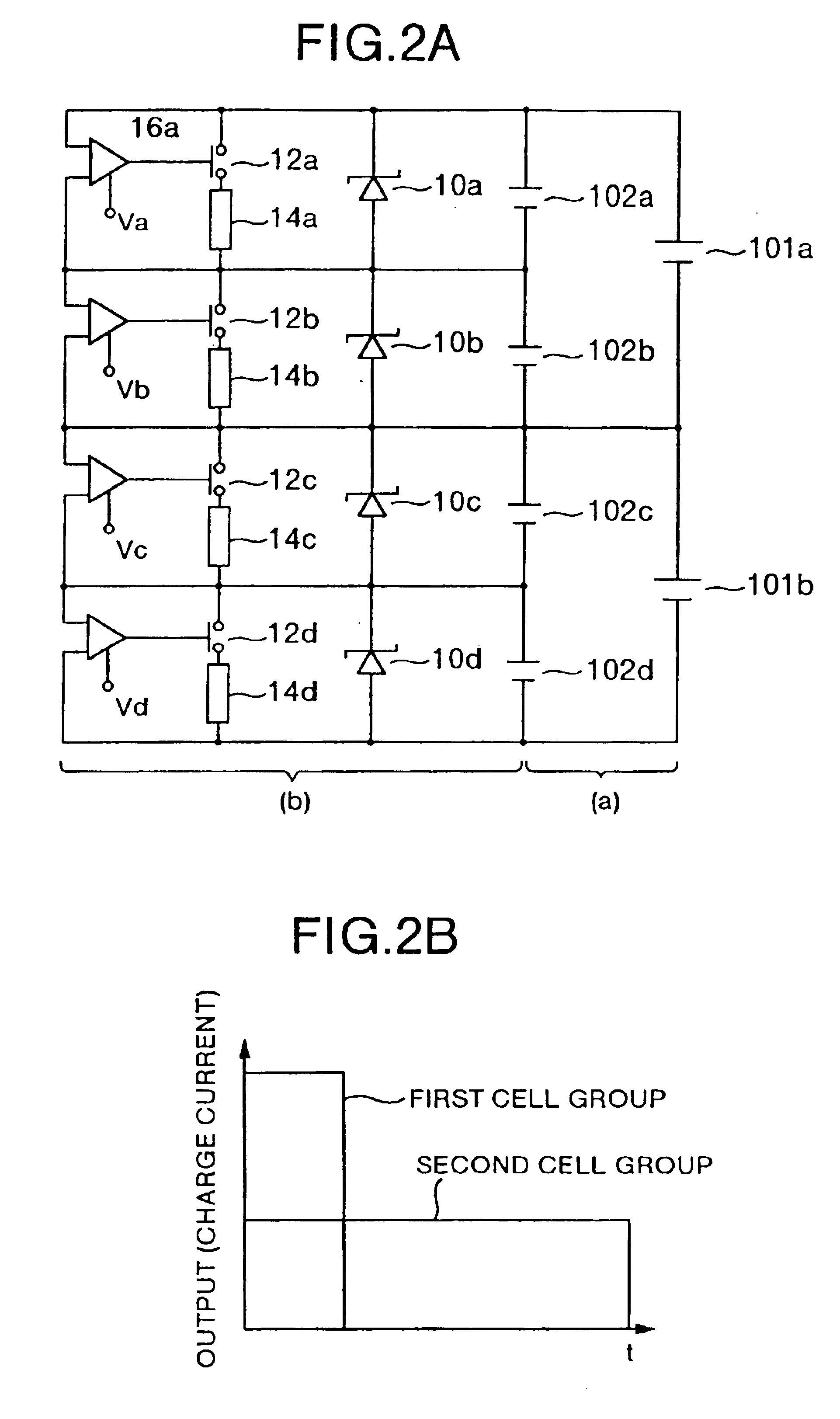Power supply unit, distributed power supply system and electric vehicle loaded therewith
a power supply system and power supply technology, applied in the direction of secondary cell servicing/maintenance, battery/fuel cell control arrangement, electrochemical generators, etc., can solve the problem that the remaining low-voltage cells cannot be fully charged before the end of the charge operation, and the voltage of all the series-connected cells cannot be shared uniformly across the circui
- Summary
- Abstract
- Description
- Claims
- Application Information
AI Technical Summary
Benefits of technology
Problems solved by technology
Method used
Image
Examples
second embodiment
[0047]FIG. 3 is a diagram showing the invention. In FIG. 3, numeral 201 designates a current limiter. The first cells 101 and the second cells 102 are connected in parallel to each other through the current limiters 201. FIG. 3 represents a case in which electrical double layer capacitors 101cpa to 101cpn are used as the first cells 101.
[0048]The current limiters 201 are each a PTC (positive thermal conductor) having such a characteristic as to increase the resistance with a large current, a resistor or a fuse. The current limiters 201 limit the current flowing between the first cells 101 and the second cells 102 (the current flowing from the first cells to the second cells, and the current flowing in the reverse direction) and thereby prevent an overcurrent from flowing in the cells. Also, the parallel-connected cells are prevented from being shorted in chain in the case where the first cells 101 or the second cells 102 are shorted.
third embodiment
[0049]FIG. 4 is a diagram showing the invention. In FIG. 4, the parallel circuit of the first cells 101 and the second cells 102 shown in FIG. 1 and (a) in FIG. 2 is connected in parallel to another similar parallel circuit. The charger / discharger 103 and the power supply / load 104 are also connected. A plurality of series-connected circuits are connected in parallel in this way, so that the capacitance, the output and the service life of the power supply unit can be variably increased.
first embodiment
[0050]Also, as in the first embodiment, the charger / discharger 103 performs the charge operation, at an appropriate timing, up to a voltage at which the electrolytic solution of the second cells 102 is electrolyzed or at which the generated gas is recombined.
[0051]As a result, in a plurality of the parallel circuits of the first cells 101 and the second cells 102 in series, the second cells 102 are equalized at a voltage at which the electrolytic solution of the second cells 102 is electrolyzed or at which the generated gas is recombined. In FIG. 4, the portion (a) corresponds to FIG. 1 or the portion (a) in FIG. 2A, while the portion (b) corresponds to the configuration of FIG. 3. These portions are connected in parallel to configure the circuit of FIG. 4.
PUM
| Property | Measurement | Unit |
|---|---|---|
| voltage | aaaaa | aaaaa |
| voltage | aaaaa | aaaaa |
| operating voltage | aaaaa | aaaaa |
Abstract
Description
Claims
Application Information
 Login to View More
Login to View More - R&D
- Intellectual Property
- Life Sciences
- Materials
- Tech Scout
- Unparalleled Data Quality
- Higher Quality Content
- 60% Fewer Hallucinations
Browse by: Latest US Patents, China's latest patents, Technical Efficacy Thesaurus, Application Domain, Technology Topic, Popular Technical Reports.
© 2025 PatSnap. All rights reserved.Legal|Privacy policy|Modern Slavery Act Transparency Statement|Sitemap|About US| Contact US: help@patsnap.com



